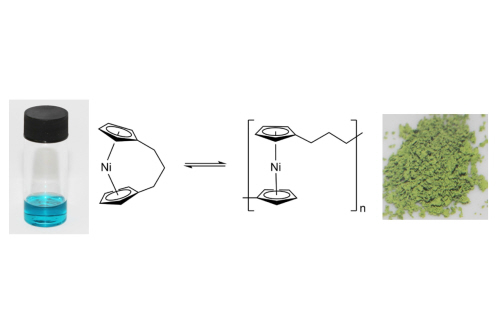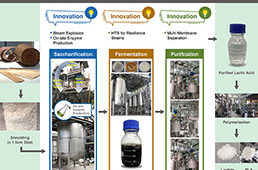
Reversible formation of a polynickelocene from a moderately strained nickelocene-based monomer. Credit: Manners Group, University of Bristol
Scientists have developed a facile route to a highly magnetic material that may improve the performance of current computer technologies.
A research team from the University of Bristol’s School of Chemistry have tapped into a polymer that feature metal atoms in their structure that have shown promise in producing self-healing materials, photovoltaic technology and information storage.
Metal sandwich complexes called metallocenes have also been incorporated into polymeric materials—most commonly using iron. Now the research team have created a polymer in which nickel is built into the structure, affording a bright green, highly magnetic material.
Rebecca Musgrave, the study’s first author, explained what scientists can do with the polymer.
“Remarkably, we also have the ability to create and destroy this dynamic magnetic polymer using only changes in temperature (via a process called depolymerisation),” Musgrave said in a statement. “Most materials with cooperative magnetic properties are insoluble or difficult to process, and this nickel-based polymer is a rare example of a readily accessible, easily handled, soluble magnetic polymer.”
The research team will continue to explore the electronic and magnetic properties of the polymer with the goal of making highly magnetic materials for use in data storage applications, crucial to improving the performance of current computer technologies.
The study was led by professor Ian Manners with assistance from researchers from the University of Oxford.




